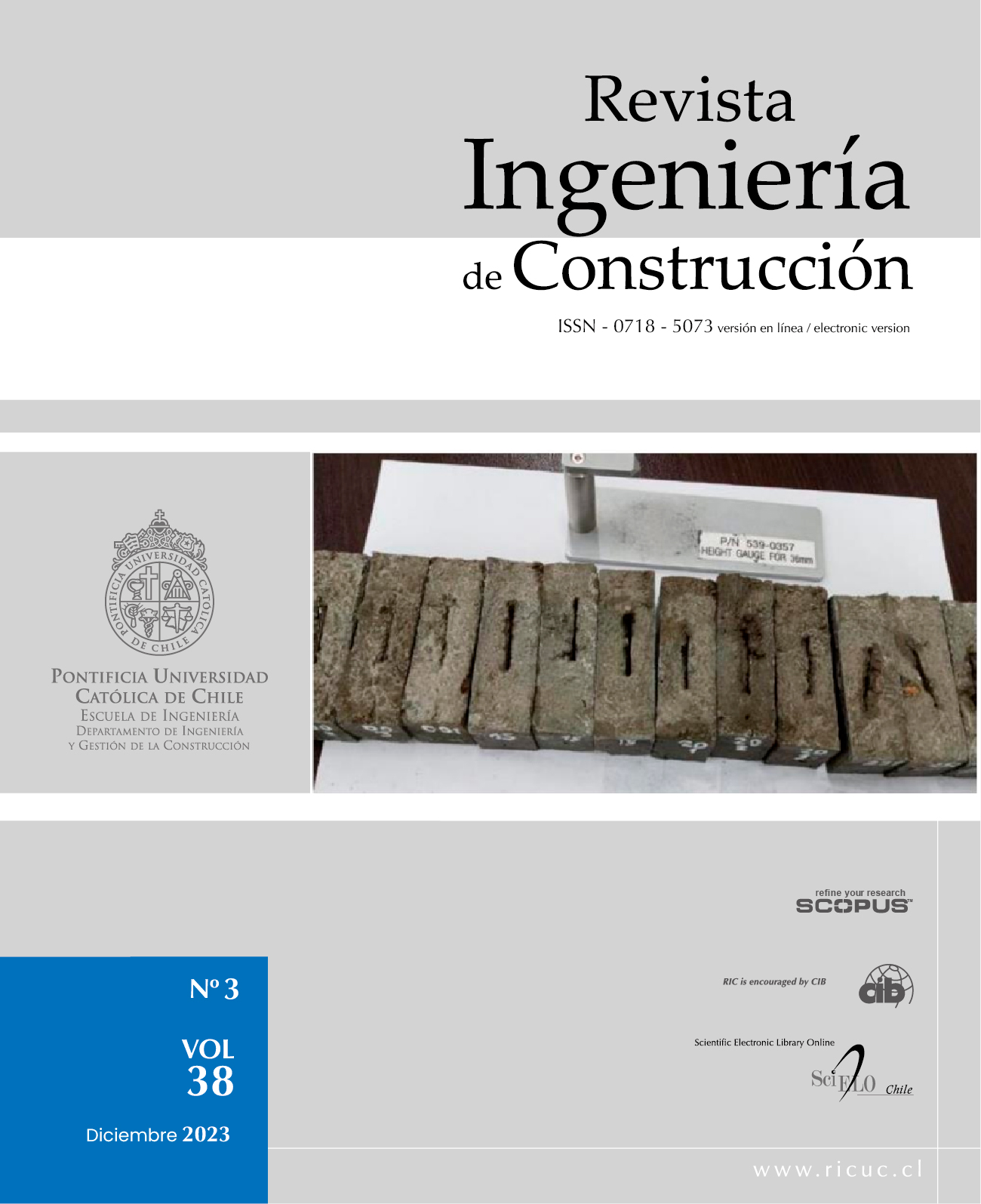In situ measurements of carbonation rate with air permeability for the development of a proposal for a classification of exposure to carbonation.
DOI:
https://doi.org/10.7764/RIC.00081.21Keywords:
Concrete, Carbonation, Strength, Air Permeability, Service LifeAbstract
The ingress of carbon dioxide CO2 into concrete is an issue that, unfortunately, does not have sufficient precedents at the national level for the execution of the Residual Service Life analysis of concrete structures. As a precursor element of steel corrosion, it is necessary to count on information on the behavior that concrete could have in Chile, according to the levels of aggressiveness expected for specific project locations. It was only in 2016 that the NCh170 Concrete Standard included this type of Exposure with Grade C1 as Mild Aggressiveness.
This work presents a review of background information collected from various third-party and own works, along with measurements of Carbonation Rates in 20-year-old concretes made in the city of Santiago, relating them to Air Permeability measured in a non-destructive way, which allowed generating a proposal for the Classification of the Degree of Exposure to Carbonation.


